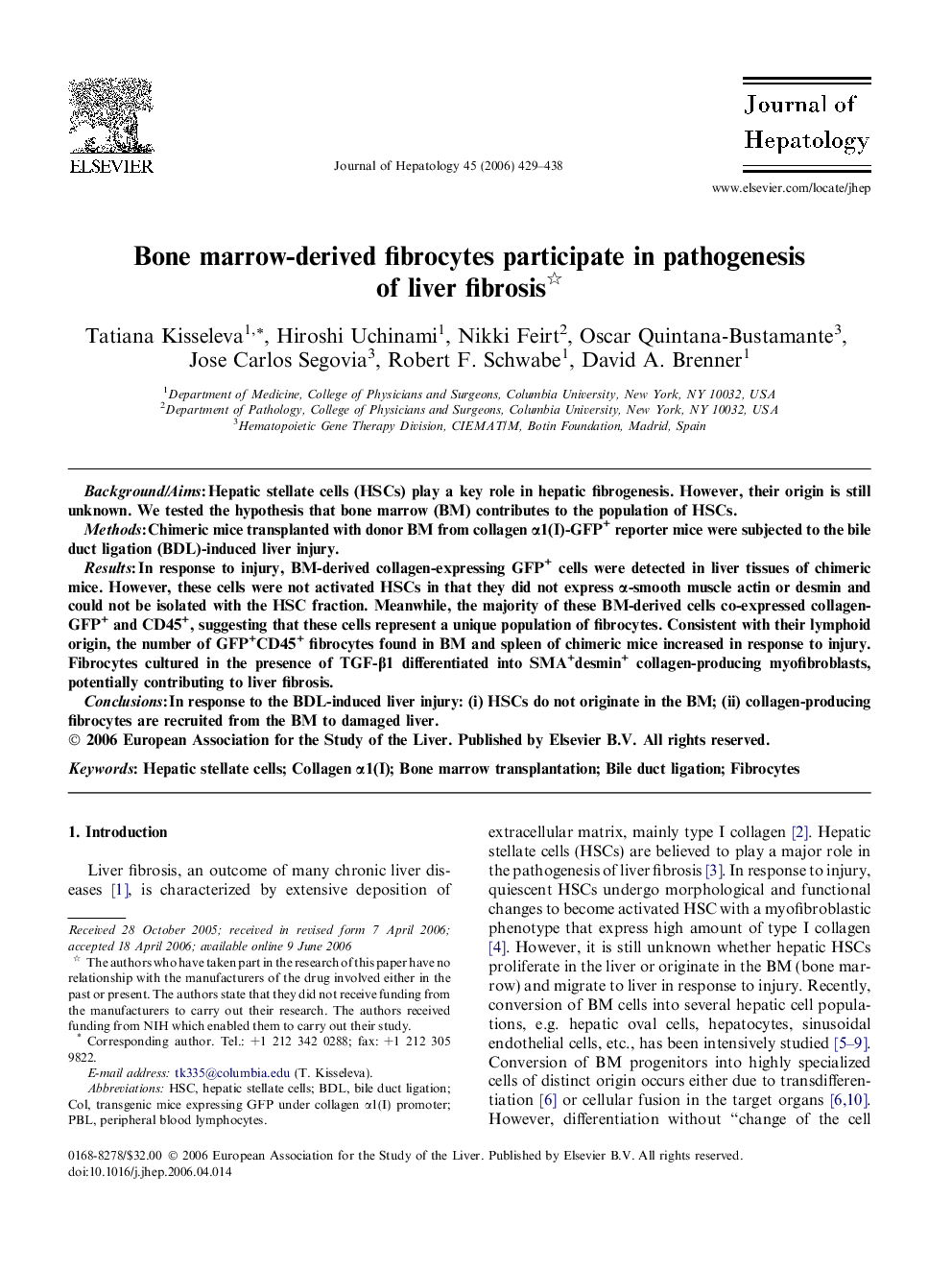| کد مقاله | کد نشریه | سال انتشار | مقاله انگلیسی | نسخه تمام متن |
|---|---|---|---|---|
| 3314920 | 1211227 | 2006 | 10 صفحه PDF | دانلود رایگان |

Background/AimsHepatic stellate cells (HSCs) play a key role in hepatic fibrogenesis. However, their origin is still unknown. We tested the hypothesis that bone marrow (BM) contributes to the population of HSCs.MethodsChimeric mice transplanted with donor BM from collagen α1(I)-GFP+ reporter mice were subjected to the bile duct ligation (BDL)-induced liver injury.ResultsIn response to injury, BM-derived collagen-expressing GFP+ cells were detected in liver tissues of chimeric mice. However, these cells were not activated HSCs in that they did not express α-smooth muscle actin or desmin and could not be isolated with the HSC fraction. Meanwhile, the majority of these BM-derived cells co-expressed collagen-GFP+ and CD45+, suggesting that these cells represent a unique population of fibrocytes. Consistent with their lymphoid origin, the number of GFP+CD45+ fibrocytes found in BM and spleen of chimeric mice increased in response to injury. Fibrocytes cultured in the presence of TGF-β1 differentiated into SMA+desmin+ collagen-producing myofibroblasts, potentially contributing to liver fibrosis.ConclusionsIn response to the BDL-induced liver injury: (i) HSCs do not originate in the BM; (ii) collagen-producing fibrocytes are recruited from the BM to damaged liver.
Journal: Journal of Hepatology - Volume 45, Issue 3, September 2006, Pages 429–438